Red poinsettia: characteristics and subtleties of care
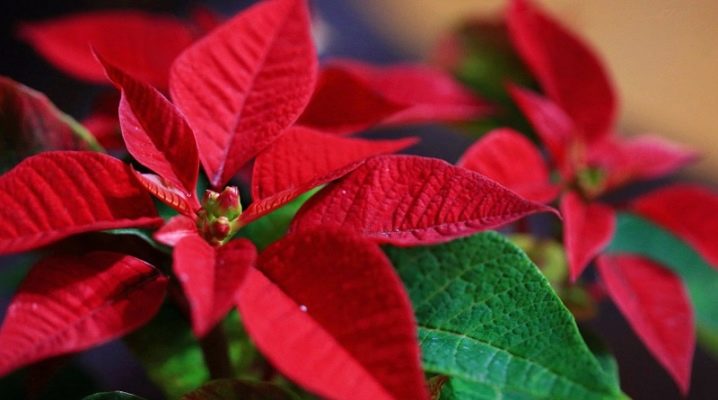
Indoor flowers are a great addition to any decor, as they can effectively transform the decor in the room. Today there is a huge selection of indoor plants, but the red poinsettia deserves special attention. It has a luxurious look and, during flowering, becomes the main decoration in a house or apartment.
Description
Red poinsettia is considered one of the most beautiful flowers, which turns fiery red during flowering. Since the flowering period of a plant most often occurs in winter on the eve of New Year's holidays and Christmas, it is often called the "Christmas Star".
Poinsettia belongs to the euphorbia family, therefore, like all other representatives of this genus, it is poisonous (causes an allergic reaction and irritation).
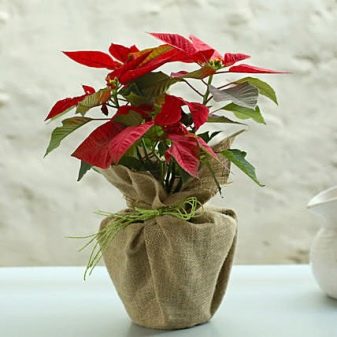
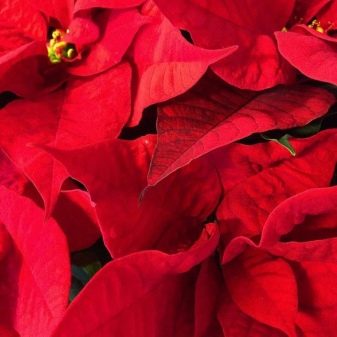
This plant is represented by several species: large-horned, spherical, beautiful, shiny, Mil poinsettia. All flowers of this family are grown at home as annuals and biennials, they are characterized by erect stems that branch well, bright green leaves and small flowers, collected in lush inflorescences.
Ornamental shrubs reach a height of 3 meters, while the leaves grow in length from 10 to 15 cm. Poinsettia bracts are densely located at the very top of the shoots, they can have both an oblong and a notched shape. Poinsettia, which grows outdoors, naturally gives seeds, but with home care it is almost impossible to get them. Indoor plant species are usually bred by selection, since they lose their varietal qualities from seeds.
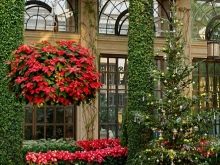
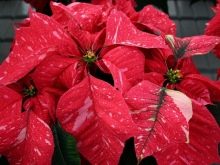
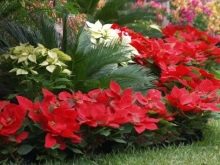
The flowering time of the red poinsettia is, as a rule, in late December and early February. During this period, the main effect of beauty is not created due to the inconspicuous flowers themselves, but due to the bracts, which begins to blush and pleases with an unusual look for 2 to 6 months. Poinsettia is often purchased as an original gift, in this case it is recommended to buy a plant with closed buds - this will allow the flower to retain its "red stars" for a long time.
After flowering, the plant tends to shed its foliage and go into the "sleep" period, so do not be afraid that the flower has died. If he is given proper care, he will be able to give flowers for the next year.
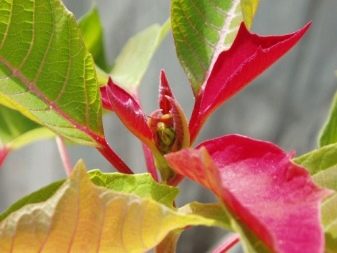
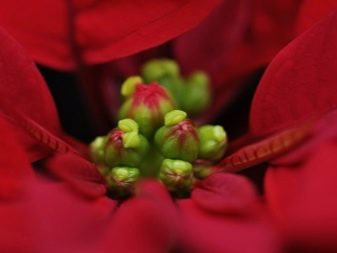
The color of the bracts can be different, depending on the varietal characteristics. The most popular red poinsettia varieties are presented below.
- Premium Red. This is a classic version of flowers with a bright red glowing core and broad-lanceolate, slightly pointed bracts.
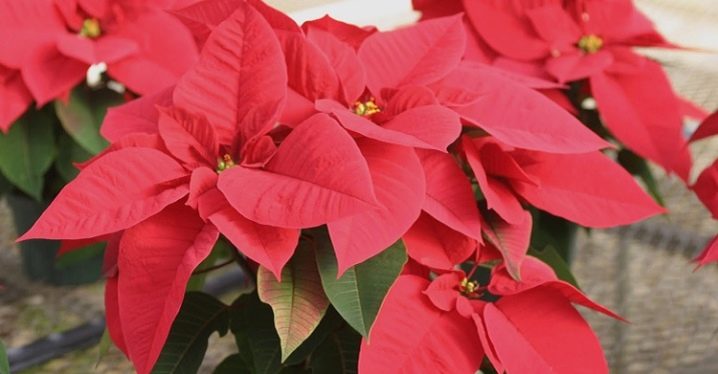
- Cortez... In such plants, the stipules are painted in a crimson hue, which gives them a solemn appearance. The foliage often develops dark green streaks as the stem grows.
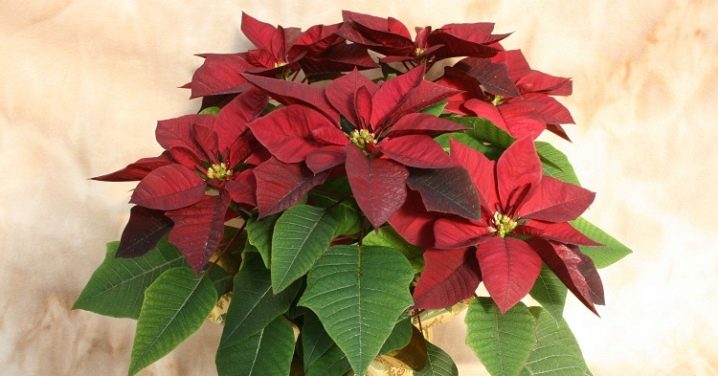
- Winter Rose Early Red. This variety will appeal to those gardeners who are very fond of roses, since the plant looks a lot like these flowers. In addition, during flowering, the stipules are covered with an unusual combination of shades, including red, white and pale pink.

- Carousel Dark Red. Plants are distinguished by dark red "petals", which have green inflorescences at the base. This variety is suitable for lovers of bright and contrasting colors.Flowers decorate the windowsill with a red blush in an original way and are a real symbol of the Christmas holidays.
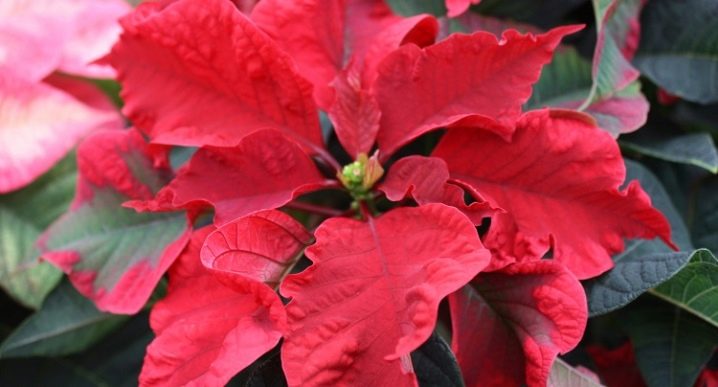
- Premium Ice Crysta. This is one of the most delicate and charming varieties, the plants of which are covered with pointed red inflorescences. Against the background of snow-white curtains, they look like "fragrant punch mugs."
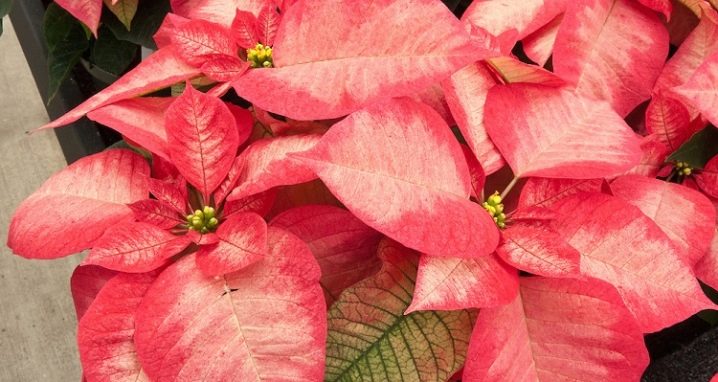
- Da Vinci. A refined red background with a slight white "bloom" gives these plants an amazing look.

- Jester Pink. This beautiful variety is characterized by a light green edging that favorably sets off the red background.
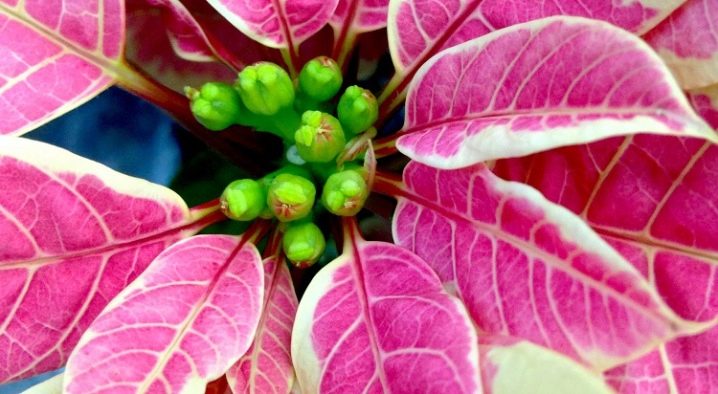
- Strawberry and Cream. They are characterized by a reddish-purple hue that imitates natural marble.
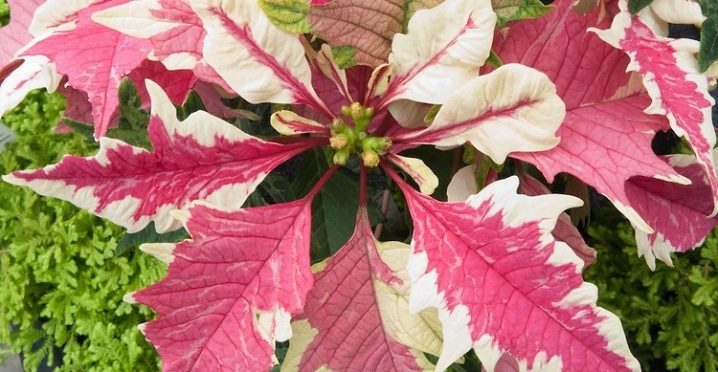
- Goldfinder. In these plants, the bracts become covered with a muted red color during flowering.
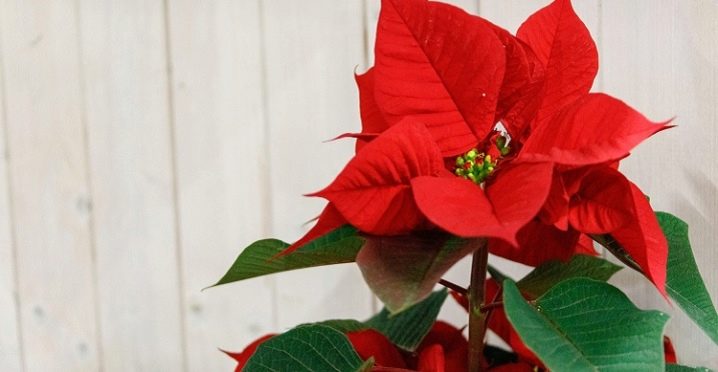
- Olympia. The juicy red flower demonstrates its beauty at the first stage of flowering, when the bracts begin to delight with a riot of fiery red hue.

- Sonora. This variety is characterized by an expressive scarlet tone, which makes the plant refined and sophisticated.
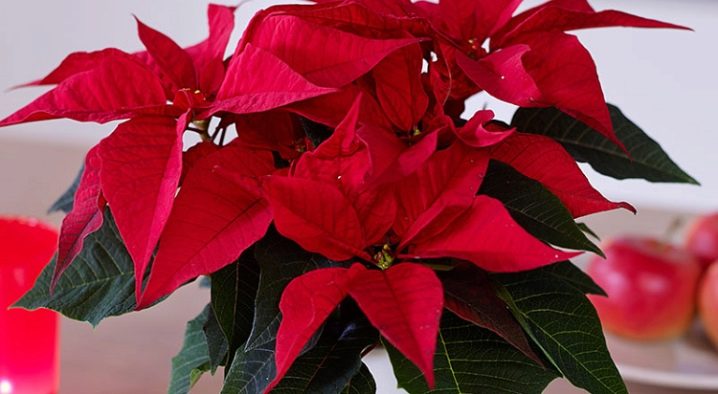
In addition, Sonora Fire, Prestige Maroon and Polly Pink are also referred to as red poinsettia varieties. They look great in the interior of any room and cheer you up with their appearance.
Poinsettia is very popular with adherents of feng shui teachings. In their opinion, this plant is able to develop the sociability of the owner and attract people with positive energy to the house. In addition, the flower has a positive effect on well-being, "extinguishes" quarrels and conflicts in the family, relieves stress. Like all other types of indoor flowers, poinsettia is demanding in care, therefore, in order to grow it yourself at home, certain knowledge and experience is required.

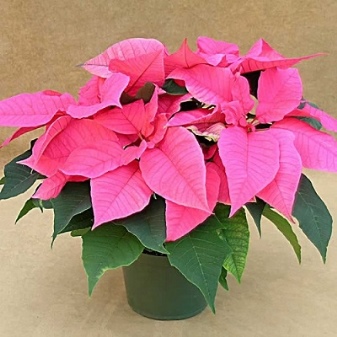
Is it poisonous or not?
Poinsettia flower contains juice, which contains both useful and harmful substances for human and animal health. The plant is rich in gum, various resins, malic acid, taraxerol, selenium, vitamins of group H, B. C, iron and iodine. Therefore, its juice is used in folk medicine to relieve itching from insect bites and to treat warts. Poinsettia decoctions are used as pain relievers for headaches and joint pains. In addition, flower juice helps to improve lactation and reduces the risk of developing mastopathy in its early manifestations.
As for the toxicity, this opinion is exaggerated, since despite the active and irritating effect of the juice, it is impossible to poison the plant. In people with an increased allergic reaction, skin rashes may occur upon contact with flower sap.
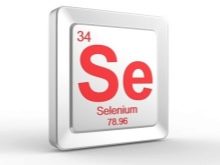


In the event that there are pets in the house, then the plant should be placed on a hill, since when its juice gets on their mucous membrane, a strong burning sensation may appear, provoking profuse salivation. With a large ingress of juice into the animal's esophagus, an upset stomach is observed. For the same reason, the flower should be kept away from small children, especially at the beginning of its flowering period.
Since this plant has a negative effect on the skin and mucous membranes, it is recommended to carry out all manipulations with it with gloves. If it was not possible to protect yourself from getting the juice, then you need to urgently rinse your hands and eyes with plenty of running water. After a poinsettia transplant, you should also remember to wash your hands.
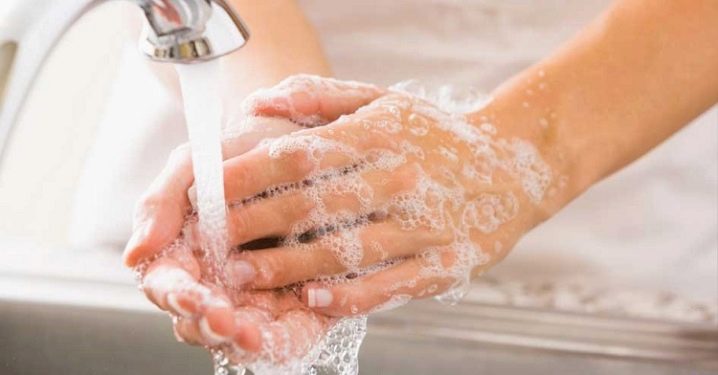
Care
Red poinsettia is considered a capricious plant, so it should be constantly looked after at home. Care should be started immediately after buying a flower, ensuring its transportation in the warmest possible conditions. It is equally important to consider in advance the correct location of the ornamental plant. It is best to place the flower pot away from heating appliances and drafts. After installing the poinsettia, she begins a month's adaptation period, during which the following care scheme must be strictly adhered to: maintain the temperature regime within +24, provide a large amount of light and spray with warm water twice a day.
Despite the fact that caring for a flower is quite difficult, at home it is still possible to achieve its re-flowering. To do this, it is important to follow all the rules of cultivation and the recommendations of specialists. Since this plant is considered southern, it constantly needs warmth. Therefore, the flower grower should be placed in rooms where the air temperature is not lower than +20. You cannot put pots with a plant in rooms where drafts are possible - this can cause hypothermia, after which all the leaves will fall off. Poinsettia grows well on windowsills illuminated by the sun, but in summer it is recommended to cover them at noon hours.
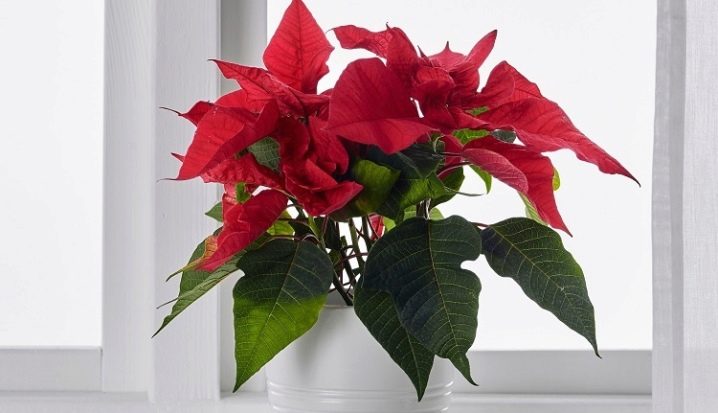
The flower propagates by cuttings. A flowery "beauty" grown at home usually has many shoots, but of them you need to choose only 4-5 of the most developed and strong ones, and remove the rest. Moreover, each cut stalk can be easily rooted and transplanted into a new pot, thus another new flower will appear in the house. For this, cuttings are taken, which have from 4 to 5 internodes, the shoot is pruned under the lowest nodule and the leaves are removed. After that, rooting is carried out in loose, moist soil or water; for planting, you can also use sand and peat, mixed in equal proportions.
In order for the cuttings to take root faster, it is recommended that they be treated with growth stimulants before planting. Planting material must be placed in rooms where the temperature regime is from +24 to +28. Cuttings should be periodically sprayed with warm water and ventilated. When roots appear on them, after about a month, you can start transplanting into small pots. After strengthening, the plant is pruned, this promotes better branching.
In order for the "Christmas star" to please with a chic color for the New Year holidays, it is best to purchase it in November, since the plant will need about two months to adapt to a new place. After that, he will begin active growth and development. The flower will need to be transplanted into a larger pot filled with fresh soil. After two months, the shoots must be cut by 1/3, since they grow rapidly in summer and autumn. If this is not done, then the poinsettia will lose its decorative appearance.
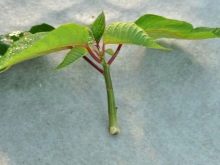
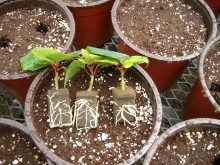
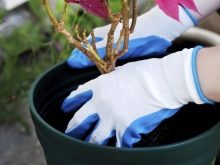
Watering
The plant of this family requires watering as the soil dries up, while in the summer it needs to be watered more. To prevent poinsettia from rotting from frequent watering, the moisture level of the mail should be checked daily. If the flower has undergone excessive watering, then it can quickly die. To prevent this, it should be urgently transplanted into another pot with fresh soil, having previously treated the rhizomes with a solution of potassium permanganate.
All watering is recommended to be carried out only with warm water, on summer days, when it is too hot, the flower can be sprayed with a spray bottle.
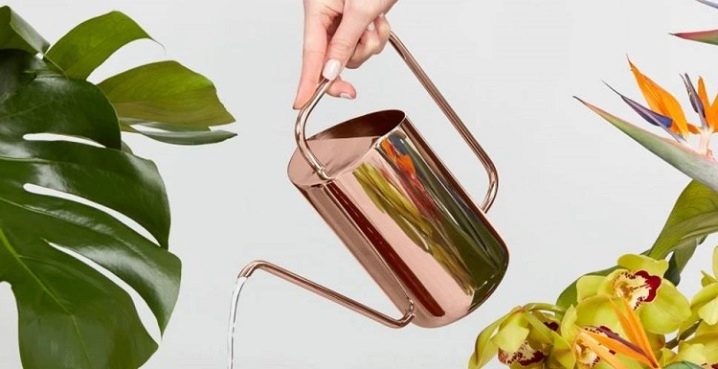
Lighting
Poinsettia is a light-loving plant and loves diffused bright light, while it should be placed in places where direct sunlight is excluded. In summer, the flower is recommended to be exposed to lighting, slightly shading. Southeast and south windows are best suited for this, as well as a balcony if it is protected from wind and drafts. In the event that it is not possible to take the plant out in the summer to the open air, then you need to do regular ventilation in the room.
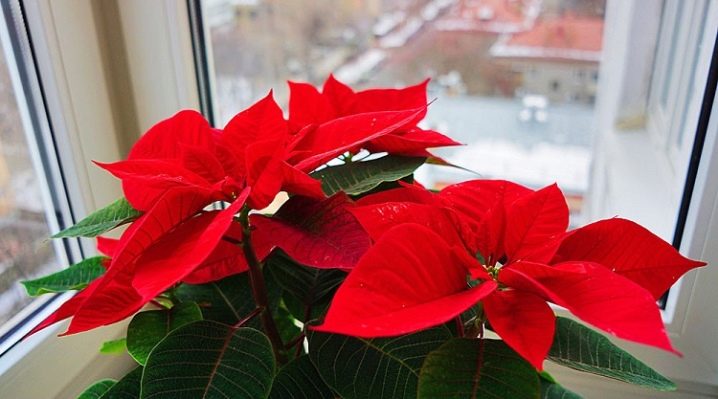
Temperature
"Christmas Star" is afraid of drafts and cold, therefore it is strictly forbidden to put it under open vents. If the flower is bought in winter, it should be transported home in a tight package. The optimal temperature regime in the house during the flowering of poinsettia should not be lower than +16. It is also worth noting that dry warm air also has a bad effect on the plant.
The flower can ache due to sudden changes in temperature (it begins to wither and lose casting), therefore, for its growth and development in the room, it is necessary to establish a constant temperature regime.

Fertilizer
Like all indoor plants, poinsettia is demanding on feeding, which must be done during its growth and before flowering. Once every two weeks, it is necessary to apply a set of complex fertilizers, strictly observing the dosage, which should not exceed 0.8% of the total norm. If desired, the plant can be fed every ten days with calcium nitrate. Additionally, it is also recommended to use foliar fertilizers, this will help to avoid various diseases caused by a lack of useful trace elements. During flowering, the flower needs to be fed only with potash fertilizers, which are intended for ornamental plants, they are applied directly to the soil.
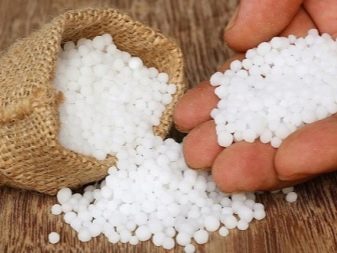
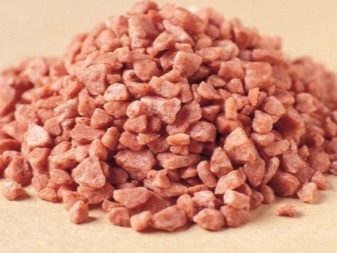
Transfer
Immediately after the purchase, the poinsettia should not be transplanted; it is best to do this in May. Before that, you first need to buy a larger pot and place good drainage on its bottom. The soil for planting should consist of sand, humus, turf and leafy soil. You can also add some peat. The pot is filled 1/3 with soil, planting is done, the rest of the planting mixture is poured. At the same time, a few hours before the procedure, the plant must be watered abundantly and removed from the old container, keeping the earthen lump.
Damaged and dry roots must be pruned. A flower planted in a new pot should be watered and top dressing should be started. The soil in the pot must not be tamped down, it must remain loose.
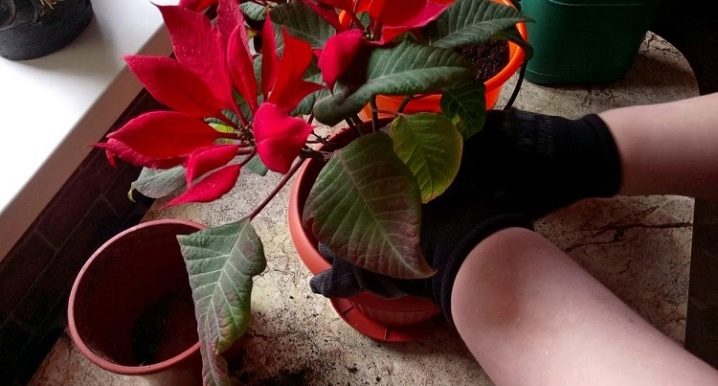
Possible difficulties
Despite the fact that poinsettia is considered a rather capricious flower, if it is provided with favorable conditions for growth and flowering, then you will get a beautiful and healthy plant. Therefore, you should constantly monitor the level of humidity and temperature, as well as carry out moderate watering and protect the plant from bright light and drafts. If the above rules are not followed, the leaves of the flower turn yellow, then fall off and the plant may die. The plant does not tolerate too dry indoor air, if this is not taken into account, the edges of the flower leaves will turn brown and the inflorescences will fall off.
Excessive dryness of the air negatively affects the development of poinsettia, various pests can appear on it, the most dangerous of which is the spider mite. It is a small red spider that most often lives on the underside of foliage. He drinks their juice and envelops them with cobwebs, as a result of which the leaves begin to dry, then turn black and crumble.
When the first signs of insect damage to the flower appear, it is necessary to spray the foliage using chemicals or a decoction of tobacco. This should be done outdoors so as not to harm the health of others.
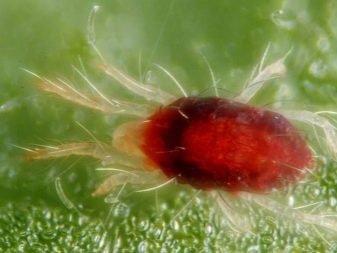

In addition to the spider mite, the scale insect and mealybug are considered pests of the red poinsettia. To combat them, it is recommended to periodically wipe the flower leaves with a sponge saturated with prophylactic agents, after which they are washed with warm water. It is advisable to carry out such procedures at least several times a month. This will help to detect pests in advance and carry out timely control of them. If you neglect such rules, then the plant will turn into a good source for the reproduction of insects, which will eventually destroy it.
If wavy streaks, specks appear on the leaves and twisting of the leaves is observed, then this indicates that the flower is damaged by thrips. The plant must be immediately treated with special preparations, and the affected leaves must be removed. It so happens that poinsettia is provided with all favorable conditions, but does not bloom. As a rule, this is due to its adaptation period, the duration of which may depend on many factors.To speed up the flowering process, the plant must be stimulated by covering it with an opaque cap or blanket for 15 hours a day.
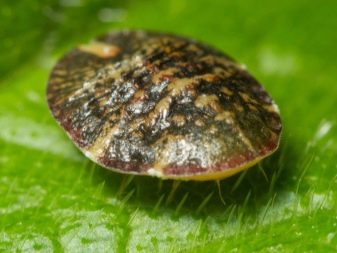
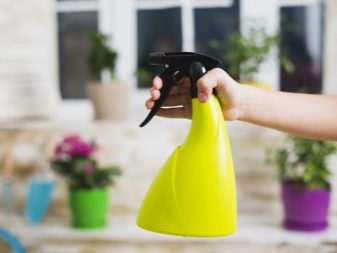
For information on how to properly grow poinsettia, see the next video.

















































The comment was sent successfully.